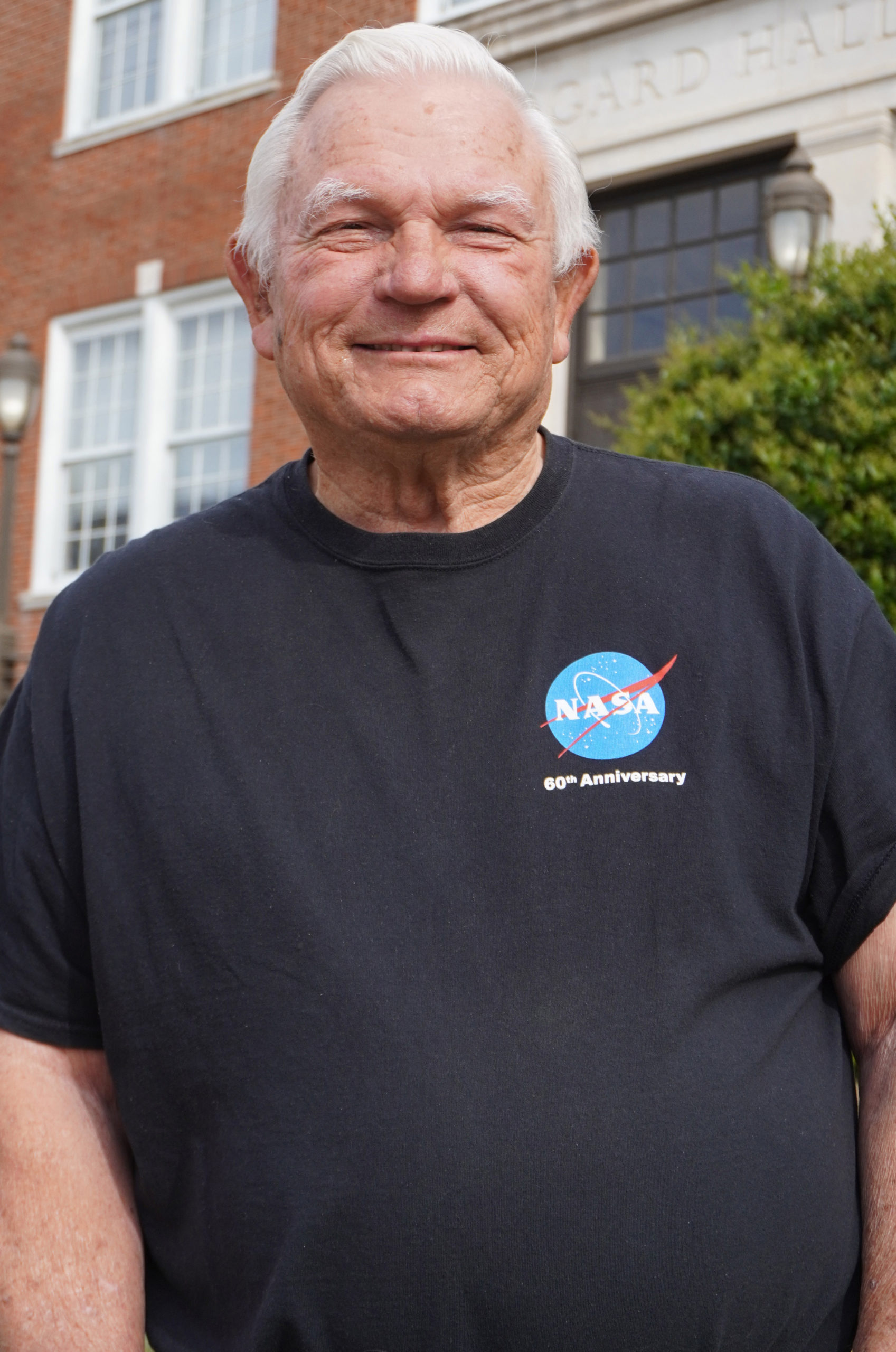COLLEGE OF ENGINEERING & SCIENCE
From The Farm To The Moon: Louisiana Tech Engineer Propelled The US Into Space

One of 15 children in a family of sharecroppers, Ragan Edmiston (Electrical Engineering ‘62) never dreamed his career would take him into the space race—that is, until a representative from NASA arrived in Ruston looking for an electrical engineer with enough knowledge to do the impossible and an affinity for learning new engineering techniques.
Only one quarter from graduation, NASA’s representative had convinced him that his next big adventure was in space. As soon as the ink was dry on his diploma, Edmiston was off to NASA’s newly established Manned Spacecraft Center in Houston, where he and his fellow engineers were quickly taught the fundamentals of engineering for aerospace. Combining the can-do attitude of his upbringing with the engineering foundation he developed at Tech, Edmiston thrived in the fast-paced, ever-changing environment.
His success in designing the snug, compact “Snoopy cap” to house miniaturized astronauts’ microphones and earpieces and keep them tight under the helmet was pivotal for the Apollo missions and his career. A misstep here would have brought the astronauts back to Earth, and NASA’s leadership would have scrapped the mission. His success was so impressive that it propelled him up the ladder, and before long, he was “NASA’s TV man.”
As the TV man, Edmiston coordinated between industry and government contractors to build the health monitoring systems and the portable camera that recorded that famous moon bounce. When Buzz Aldrin and Neil Armstrong planted their boots in the lunar dust, they had Edmiston’s team’s handiwork strapped to their backs, recording their health data and sending it back to ground control. But it was the camera that revolutionized space travel. Its compact, user-friendly module gave the U.S. a leg up in the PR game, sending those images into Earth’s living rooms and stamping the USA’s tech-savvy image in global minds.
But Edmiston wasn’t celebrating with the rest of the country during the moon landing. A true engineer at heart, his eyes scrubbed the visuals for each successful move and every potential hiccup. Only now, looking back over fifty years, he sees the bigger picture.
I can see how important it was to the world. Not just to the U.S. I believe that project pulled the world a bit closer.
Edmiston didn’t stop at the first moon landing. Like NASA, he kept pushing forward, coordinating engineering feats from industry and government partners through exploratory Apollo missions and the early space shuttle program. He even automated the camera to go on the lunar buggy and function without astronaut intervention.
The technology that Edmiston helped develop at NASA went beyond the immediate applications for the space race. The same techniques used to create the video and audio equipment that captured the lunar landscapes and sounds set the stage for the tech we can’t live without today, like cell phones and handheld camcorders, not to mention those microphone and earpiece headsets that were all the rage in the 1980s and 1990s.
My life would have been a lot different without Louisiana Tech. Earning my degree is still, to this day, one of the hardest things I’ve ever done, and it was worth every second of hard work and studying I had to put in. Without Louisiana Tech, who knows where I’d have wound up.
So, what’s he up to now? After retiring from NASA, Edmiston spent 20 years building churches. Now, he’s moved on to mentoring Ruston youths through the Teen Challenge Drug Rehab, showing them that with a bit of grit and a solid education, the sky’s not the end of the road—it’s just the starting line.